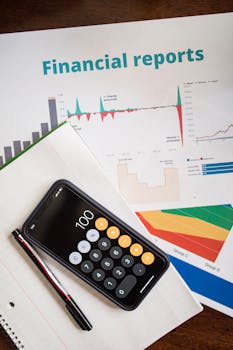What is digital habits audit?

What is Digital Habits Audit?
In today’s fast-paced digital world, our online behaviors can significantly impact our productivity and personal development. That’s where a digital habits audit comes into play. Conducting this self-assessment allows individuals to reflect on their digital usage and pinpoint areas for improvement. By evaluating how we interact with technology, we can cultivate healthier online habits that enhance both our efficiency and well-being.
Understanding Digital Habits Audit
A digital habits audit is essentially a thorough review of how you use technology in your daily life. It involves analyzing the tools and platforms you engage with, the time you spend on them, and the overall impact they have on your life. This process is particularly vital for those looking to achieve a balanced work-life environment.
Definition of Digital Habits Audit
A digital habits audit is a systematic evaluation of your technology use, focusing on both productive and unproductive behaviors. It helps you understand where your time goes and how your digital interactions affect your mental and emotional health. This evaluation can serve as a wake-up call, prompting necessary changes for better productivity.
Importance of Conducting a Digital Habits Audit
Why is it crucial to conduct a digital habits audit? The benefits are numerous:
- Improved Productivity: By identifying distractions, you can streamline your work process and enhance focus.
- Better Work-Life Balance: Understanding your digital habits can help you draw clearer boundaries between work and personal time.
- Mental Well-Being: This audit can uncover habits that lead to stress or anxiety, allowing you to take steps to mitigate them.
For more insights on evaluating your digital habits, check out the Digital Habits Checkup from Harvard University.
Steps to Conduct a Digital Habits Audit
So, how do you go about performing a digital habits audit? Follow these practical steps to get started.
Identifying Digital Tools and Platforms Used
Begin by listing all the digital tools and platforms you use daily. Commonly used tools might include:
- Email (Gmail, Outlook)
- Social media (Facebook, Instagram, Twitter)
- Productivity apps (Trello, Asana)
- Communication platforms (Slack, Zoom)
Being aware of the tools at your disposal is the first step in understanding your digital habits.
Tracking Time Spent on Digital Activities
Next, track the time you spend on each of these platforms. Use tracking tools like RescueTime or Toggl to get an accurate picture of your digital interactions. This data will reveal patterns in your behavior, allowing you to see where you might be spending too much time.
Analyzing Findings and Recognizing Patterns
Once you have gathered your data, it’s time to analyze it. Look for patterns in your usage. Ask yourself:
- Are there specific times of day when you’re most distracted?
- Which platforms contribute most to your productivity?
- Are there activities that drain your energy without much benefit?
By recognizing these patterns, you can make informed decisions about where to adjust your digital habits.
Implementing Changes Based on Audit Results
After conducting your audit, the next step is making adjustments based on your findings. Here are some strategies to enhance your productivity.
Setting Goals for Digital Usage
Establish clear, achievable goals for your digital habits. For example, if you found that social media consumes too much of your time, set a goal to limit your usage to 30 minutes a day. These goals should be SMART—specific, measurable, achievable, relevant, and time-bound.
Tools and Apps for Managing Digital Habits
Utilize various tools and apps designed to help manage your digital habits. Here are a few recommendations:
- Forest: A productivity app that encourages focus by planting virtual trees while you work.
- StayFocused: A browser extension that limits time spent on distracting websites.
- Habitica: Gamifies productivity by turning tasks into a role-playing game.
These tools can keep you accountable and help reinforce positive habits.
Maintaining a Healthy Digital Lifestyle
Conducting a digital habits audit is not a one-time event; it’s a continuous process. Regular assessments are essential to maintain a healthy balance in your digital life.
Regular Audits for Continued Growth
Set a schedule for periodic audits, perhaps every few months. This approach ensures that your digital habits evolve with you, allowing for ongoing adjustments that enhance your productivity.
Creating a Supportive Environment
Finally, crafting an environment that encourages healthy digital habits is crucial. Consider these tips:
- Designate specific times for work and relaxation.
- Create a clutter-free workspace, free from distractions.
- Encourage family and friends to support your digital goals.
Feel free to explore more about creating boundaries in your digital life at Assessing Your Digital Habits.
Conclusion
Conducting a digital habits audit is essential for anyone looking to optimize their online interactions. Through this self-assessment, you can uncover unproductive behaviors, improve your focus, and foster a healthier work-life balance. By following the steps outlined in this article, you can become more mindful of your digital habits and make empowered choices that enhance your overall well-being. Embrace the process, and you’ll likely discover that small changes can lead to significant improvements in your life.